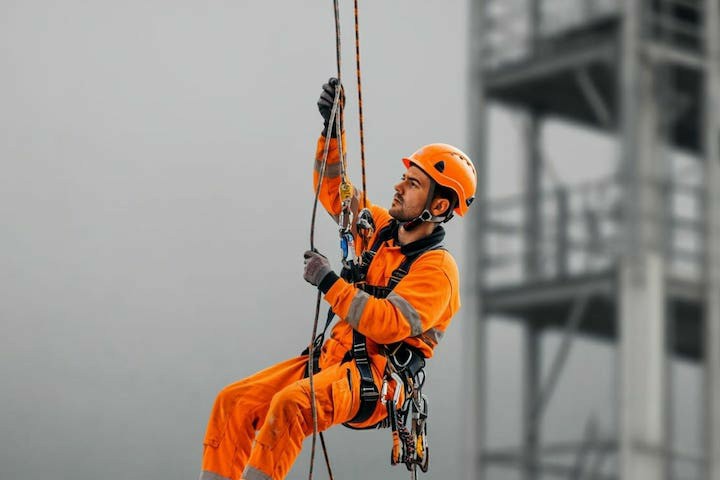


 349,500 Offered Certificates
349,500 Offered Certificates
 24/7 Online Training
24/7 Online Training
 Money Back Guarantee
Money Back Guarantee
 Fully Accredited Courses
Fully Accredited Courses

Created at: 22-02-2025 18:16
Ensuring the safety of employees is a fundamental responsibility of any business, especially when tasks require working at heights. Working at Heights safety training not only complies with legal requirements but also plays a crucial role in protecting employees and reducing the risk of accidents. In this blog, we will explore effective strategies to integrate Working at Heights training into your company's safety policies, the importance of internal safety audits, the need for refresher training, and how compliance monitoring can create a sustainable culture of safety.
Working at Heights training is essential for anyone involved in activities where there is a risk of falling. Certifications, like Working at Heights Certification Ireland, ensure that employees not only understand the inherent risks but also the safety measures needed to mitigate these dangers. Implementing this training within your business policies can:
Risk assessments are the foundation of any safety strategy. Begin by identifying potential hazards related to working at heights within your workplace. Here are actionable steps to follow:
Once risk assessments have been completed, it's time to integrate Working at Heights courses into your policies. Here are important steps to take:
Regular safety audits are crucial for ensuring compliance and identifying areas for improvement. Internal audits should include:
By conducting these audits regularly, businesses can adapt their policies and training programs to meet changing needs and ensure ongoing safety.
Safety training is not a one-time event but an ongoing process. Therefore, offering refresher courses ensures that employees stay updated on safety practices. Schedule refresher training sessions periodically and after:
This ongoing education reinforces safety protocols and fosters a proactive approach among employees.
Monitoring compliance is essential to assess the effectiveness of your safety program. Here are some techniques:
Improving compliance monitoring will also encourage a safety-focused mindset among employees.
Building a culture where safety takes precedence requires engagement from all levels of the organization. Here are some steps:
Working at Heights safety training is imperative for any business that requires employees to perform tasks at height. By implementing effective policies regarding training, regular audits, refresher courses, and compliance monitoring, companies can significantly reduce workplace risks and enhance productivity. Investing in your workforce’s safety means investing in the future of your business. Enroll your employees in certified Working at Heights training programs today to ensure compliance and promote a culture of safety in your organization.
For comprehensive training options, including Working at Heights certification Dublin and Working at Heights certification Cork, visit our course page or contact us at [email protected] for more information.